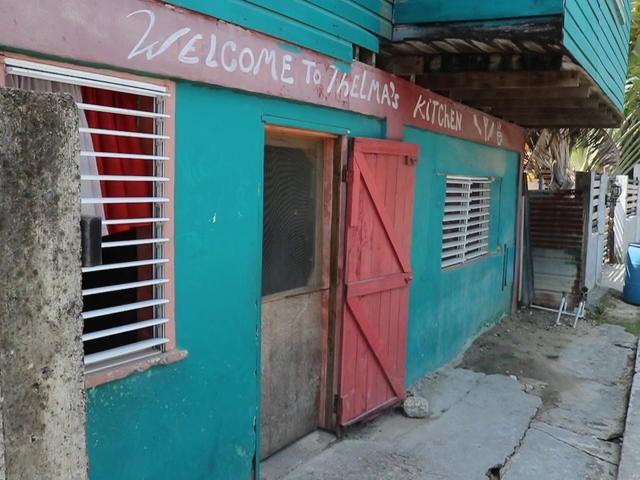If you’ve eaten from Thelma’s Kitchen before, then you know her food is very tasty. The last time we visited with Thelma Arana, it was to do a positive story about the variety of creole food she cooks daily at her Caesar Ridge Road address. But today, the story isn’t that good. In fact, one of Thelma’s neighbours has made a complaint against her business, claiming that the smoke that emanates from there is affecting her family. So, we stopped by to see what the issue was. We discovered that it is a barbeque grill that Thelma uses occasionally to boil the ingredients for her boil-up. But the next-door neighbour says the smoke issue occurs daily and that she wants it to stop. Thelma says the problem between her, and the next-door neighbour precedes the opening of her restaurant and involves other matters. News Five’s Marion Ali reports.
Marion Ali, Reporting
A resident who lives beside a restaurant has gone public to complain about the challenge she has been having ever since the establishment opened up about ten years ago. Everyone in the Yarborough/Caesar Ridge Road area knows Thelma’s Kitchen. While many of you have enjoyed her food, her next-door neighbour, Betty Bradley, says she has not been enjoying the smoke from the restaurant.
Betty Bradley, Caesar Ridge Road Resident
“The neighbor has a restaurant, right, and I nuh have no problem with that, because everybody has to live, right? And deh thing deh, but then this is going through so many years I’ve been through. The neighbor light up a fire hearth every morning, soon da morning, and I live here, and that’s the smoke that wake me up. I can’t inhale. I have my family and everything there. My granddaughter gets sick offa the smoke.”
Bradley says that in the past, she had complained to the Belize City Council about the problem and that it had subsided. She now claims that the smoke is back daily. But Arana says that she had followed the Belize City Council’s directive and stopped using her fire hearth altogether and switched to custom-made gas stoves for cooking. She admits that twice a week she uses a barbeque grill for a short while because it is more affordable than butane.
Thelma Arana, Owner, Thelma’s Kitchen
“Da wa small barbecue grill I use. It’s not a huge fire weh yoh wudda say wa mek big fire or big smoke. I only light the fire on Thursdays and Fridays. We have to boil a huge [pot of] plantains, and that’s just for one hour. And Fridays, I had to boil the potatoes, the cassava thing, just for one hour, and then I out it. And then you have to boil deh pigtail, you have to boil all this stuff. I have to buy gas like once every time and maybe sometimes twice a week.”
Thelma Arana believes that the complaint stems from an old issue between them. Today when we showed up, the barbeque grill was not in use. Thelma says that to avoid a confrontation with her neighbour, she will consider giving up use of the grill as well. One thing both neighbours agree to is that they both have had differences in the past that had nothing to do with smoke.
“This lady has a thing against me, right? And she know the reason, right? All I want…”
Marion Ali
“It has to do with more than just the fire hearth stove?”
Betty Bradley
“Well, I think so.”
“My property was a little higher than hers and when it rained and then the water goh eena fi she yard ih cuss mi fi that. I can’t stop rain.”
The Belize City Council sent a representative today to Thelma’s Kitchen, to inform her that she will have to stop using the grill. She has told us that she will. Marion Ali for News Five.
